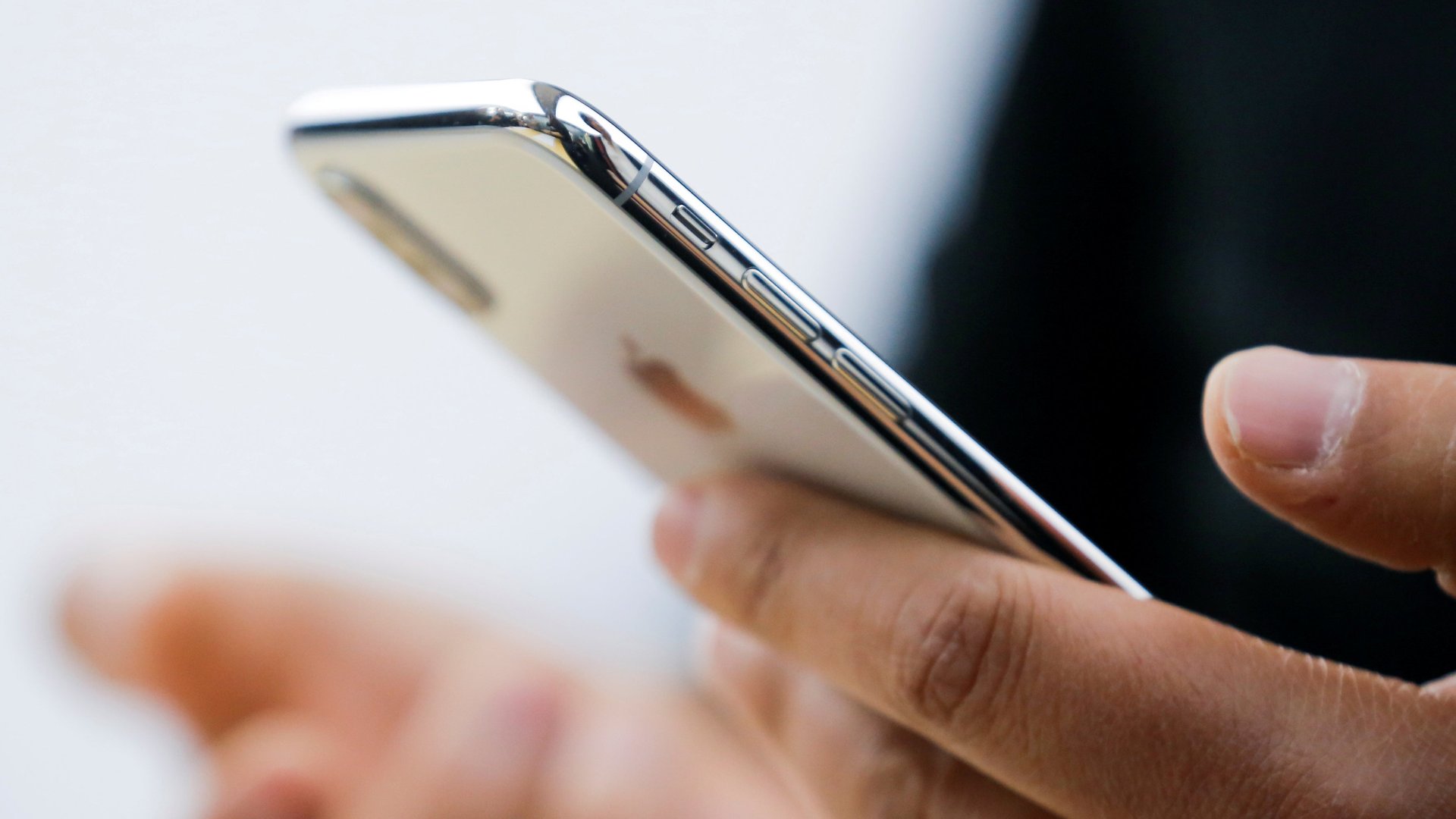Apple’s future success relies on people simply paying more
Apple is one of the most successful companies of all time, having sold over 1 billion iPhones, tens of millions of other products, and recently passing the $1 trillion valuation mark.


Apple is one of the most successful companies of all time, having sold over 1 billion iPhones, tens of millions of other products, and recently passing the $1 trillion valuation mark.
But things may not be as rosy as they appear. In recent years, Apple has not actually been selling more products than it has in the past. Rather, it’s been charging more.
When comparing quarterly shipments of Apple’s three main hardware categories—the iPhone, Mac computers, and the iPad—against shipments from the same quarter a year earlier, it looks like Apple’s sales have more or less stagnated:
But after a recent tumble into negative territory in 2016 and 2017, Apple’s revenue has actually been growing* recently:
So how is Apple growing if it’s not selling more products? There are a few answers.
First, the company’s services business—which includes sales of apps, games, movies, books, subscriptions, and AppleCare—has been on a tear for a while now. In the last four quarters alone, it’s generated more than $35.7 billion in revenue—that’s enough to make it a Fortune 100 company in its own right, generating more than the likes of Coca-Cola, Nike, and 3M in that same time period. Here’s what Apple’s growth looks like without services sales:
It’s a similar chart, but you’ll notice the recent dip into negative territory was far steeper, and last quarter’s growth was 14.7%, whereas it was 17% with services sales.
With iTunes, the App Store, Apple Pay, Apple Music, and iCloud, Apple has perfected the art of getting customers to keep spending money with the company long after they’ve bought their devices.
Apple’s Other Products business line—which includes sales of accessories, including the Apple Watch, Beats products, and AirPods—has also seen strong growth recently. Apple doesn’t break out shipment figures for these products, so it’s tough to see whether the businesses are growing, but revenue certainly has been. In the third fiscal quarter of this year, other products generated $3.74 billion—a jump of about 36% over the same period last year.
But it’s not just services and accessories revenue that’s buffeting Apple. The company is also just charging more for products than it did previously. It introduced the iPhone Plus model in 2014, and the iPhone X in 2017—both of which came with price bumps, and the X being the first iPhone to cost over $1,000. The average price of an iPhone has spiked in recent quarters:
For years, the average price of an iPhone hovered around $650, but after Apple started to offer a wider range of more expensive models, the price started to creep up. The top end of all its major product lines now cost over $1,000.
So right now, Apple is doing well because it’s convinced people that it’s a luxury brand, and can continue to charge increasingly high premiums for its products. There are even reports that the next top-end iPhone, likely to be announced in September, could be even more expensive than the iPhone X. All the while, Apple’s margins have hovered around 37% to 40% in recent quarters—an enviable percentage in any industry.
It’s a smart move for Apple to grow its accessories business—there’s even a case to be made that the most exciting things that Apple is making these days aren’t its phones, but its peripherals—as it’s allowed it to lock in consumers to ever more purchases around their phones, as the App Store has also done. And more cellphone providers, as well as Apple itself, are pushing subscription models for its costly phones, which likely makes the high prices more palatable for consumers. Still, its lofty valuation was built on the back of iPhone, Mac, iPod, and iPad sales, so the issue of declining sales is undoubtedly real.
Apple likely has more tricks up its sleeve (where’s that car, or those augmented-reality glasses?) that can drive new sales for the company. But if consumers aren’t buying any more Apple products right now, how long can Apple continue to increase its prices before they start to look elsewhere?
*Here’s a rather tangled chart that shows just what parts of Apple’s business are growing: